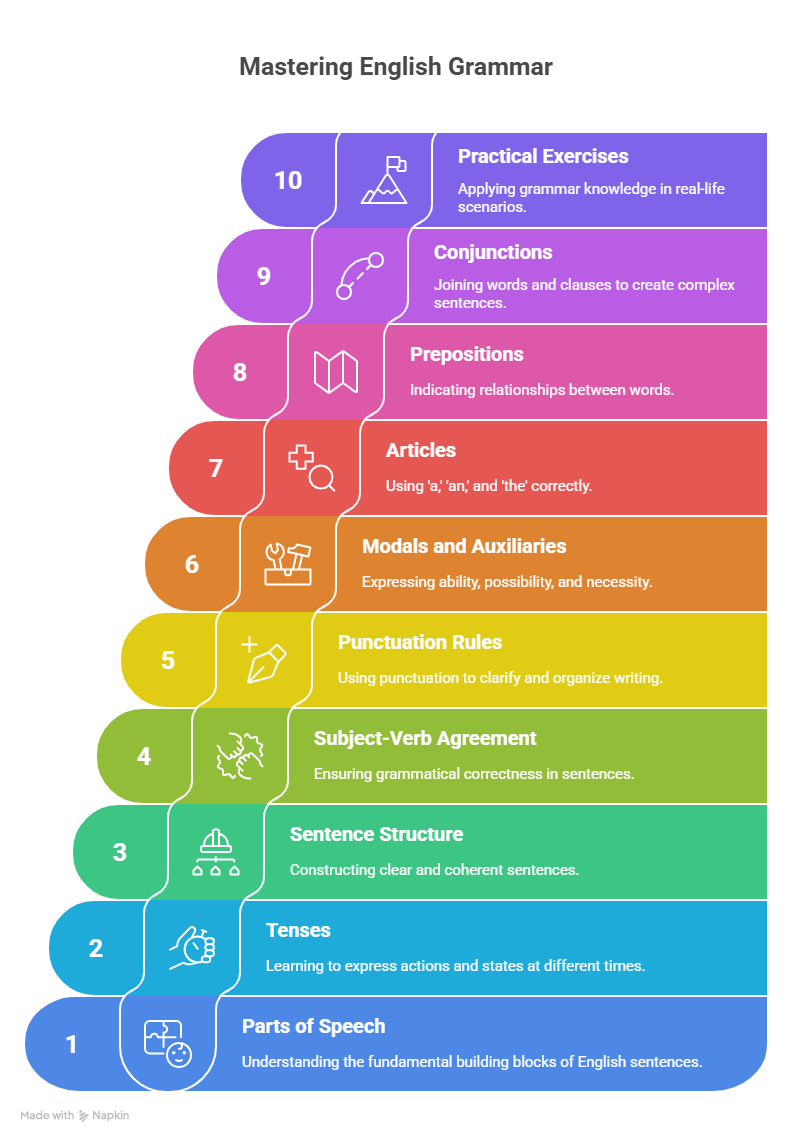
Chapter 7: Articles (a, an, the)
Articles are small but essential words in the English language that precede and modify nouns. There are two types of articles: definite and indefinite. The definite article is “the,” and the indefinite articles are “a” and “an.” Mastering the use of articles is crucial for speaking and writing accurately, as they help specify whether we are referring to something specific or something more general.
The indefinite articles “a” and “an” are used with singular, countable nouns when referring to something for the first time or when the exact identity is not important or known. “A” is used before words beginning with a consonant sound, for example, “a book,” “a car,” and “a university.” “An” is used before words beginning with a vowel sound, such as “an apple,” “an hour,” or “an umbrella.” For example, “I saw a movie last night” (any movie, not a specific one known to both speaker and listener), and “She is an engineer” (not specifying which engineer).
The definite article “the” is used when both the speaker and listener know exactly what is being referred to or when something has been mentioned previously. For example, “The book you lent me was fascinating” or “I saw the movie you recommended.” “The” can be used with singular and plural nouns, and with countable and uncountable nouns. For instance, “the students,” “the information,” and “the rice.” In some situations, no article is needed, especially when referring to things in general: “Books are expensive,” or with proper nouns, such as names of people, most countries, and cities.
Correct use of articles is often challenging for learners, especially when their first language does not use articles. However, consistent practice and exposure help develop an intuitive understanding of when and how to use “a,” “an,” and “the.” Accurate article usage improves both clarity and professionalism in communication. For example: “Please give me an umbrella” (any umbrella), versus “Please give me the umbrella” (a specific one known to both speaker and listener).

